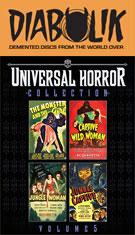

THE MONSTER AND THE GIRL
B&W, 1941, 64 mins. 38 secs.
Directed by Stuart Heisler
Starring Ellen Drew, Robert Paige, Paul Lukas, Joseph Calleia, George Zucco, Phillip Terry, and Skipper the Dog
CAPTIVE WILD WOMEN
B&W, 1943, 60 mins. 42 secs.
Directed by Edward Dmytryk
Starring John Carradine, Evelyn Ankers, Milburn Stone, Acquanetta, Martha MacVicar
JUNGLE WOMAN
B&W, 1944, 63 mins. 28 secs.
Directed by Reginald Le Borg
Starring Evelyn Ankers, J. Carrol Naish, Acquanetta, Richard Davis, Milburn Stone, Lois Collier
THE JUNGLE CAPTIVE
B&W, 1945, 60 mins. 44 sec.
Directed by Harold Young
Starring Otto Kruger, Vicky Lane, Amelita Ward, Rondo Hatton
Scream Factory (Blu-ray) (US RA HD), Universal (DVD) (US R1 NTSC)
 years into its much
years into its much 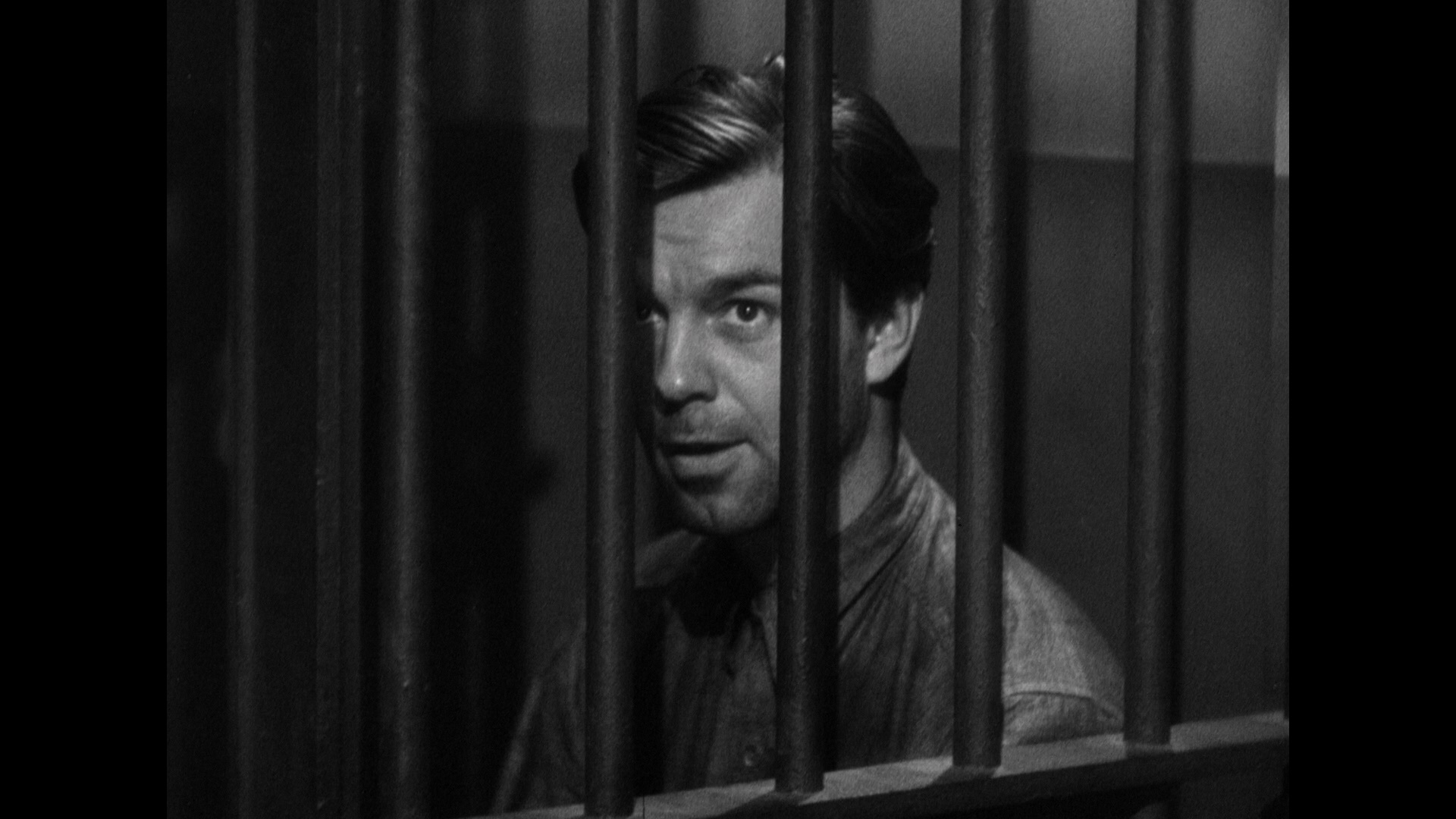 appreciated cycle of boxed sets devoted to Universal horror classics, Scream Factory goes completely ape with this collection of four films loaded with monkey suits, nefarious medical experiments, and so much cigarette smoke you'll need to open your windows. The selection of titles might lead one to expect that these are really jungle adventures masquerading as horror fare, but have no fear; there's plenty of monster action on hand here with a game cast tailor made to please genre fans.
appreciated cycle of boxed sets devoted to Universal horror classics, Scream Factory goes completely ape with this collection of four films loaded with monkey suits, nefarious medical experiments, and so much cigarette smoke you'll need to open your windows. The selection of titles might lead one to expect that these are really jungle adventures masquerading as horror fare, but have no fear; there's plenty of monster action on hand here with a game cast tailor made to please genre fans.  Susan (Drew), apparently forced into a life
Susan (Drew), apparently forced into a life 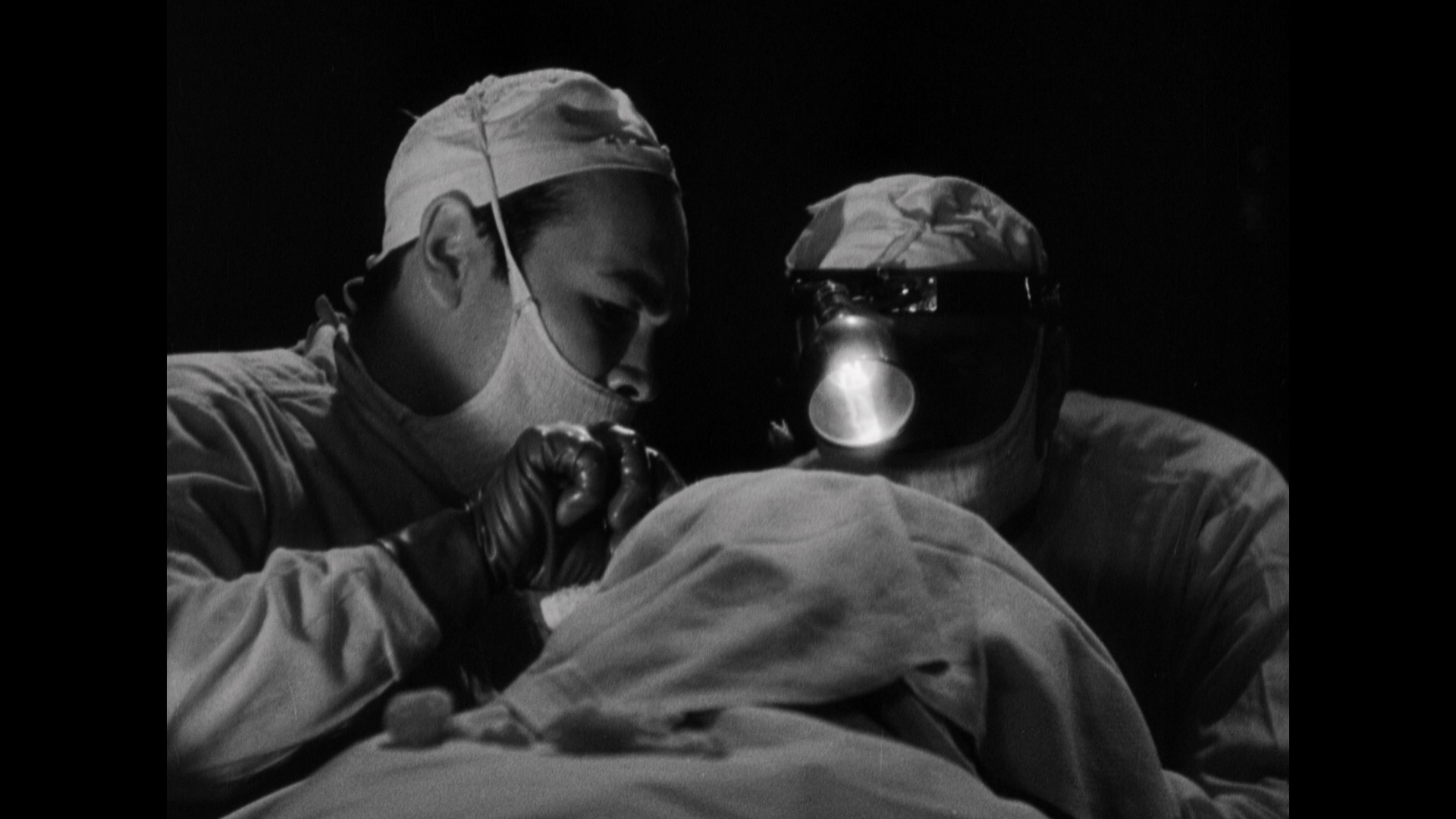 of prostitution. Her brother, Scot (Terry), pays for his attempts to save her by being framed for murder and sent up to the river to death row. Meanwhile mad scientist Dr. Perry (Zucco) is performing brain swapping experiments and finds an ideal subject when Scot gets executed and ends up with his consciousness inside a gorilla. Now unencumbered by his human form, the rampaging Scot-monster decides to strike back against the underworld that ruined his family.
of prostitution. Her brother, Scot (Terry), pays for his attempts to save her by being framed for murder and sent up to the river to death row. Meanwhile mad scientist Dr. Perry (Zucco) is performing brain swapping experiments and finds an ideal subject when Scot gets executed and ends up with his consciousness inside a gorilla. Now unencumbered by his human form, the rampaging Scot-monster decides to strike back against the underworld that ruined his family.  reenactment of an interview he conducted with Bob Burns, and the unexpected scene
reenactment of an interview he conducted with Bob Burns, and the unexpected scene  that caused censorship hassles in some territories. Some appreciative prerecorded comments by Steve Kronenberg are also sprinkled in here, too.
that caused censorship hassles in some territories. Some appreciative prerecorded comments by Steve Kronenberg are also sprinkled in here, too.  Carradine doing his trademark villain routine. Though she doesn't get unveiled until well into the action, Acquanetta is an
Carradine doing his trademark villain routine. Though she doesn't get unveiled until well into the action, Acquanetta is an 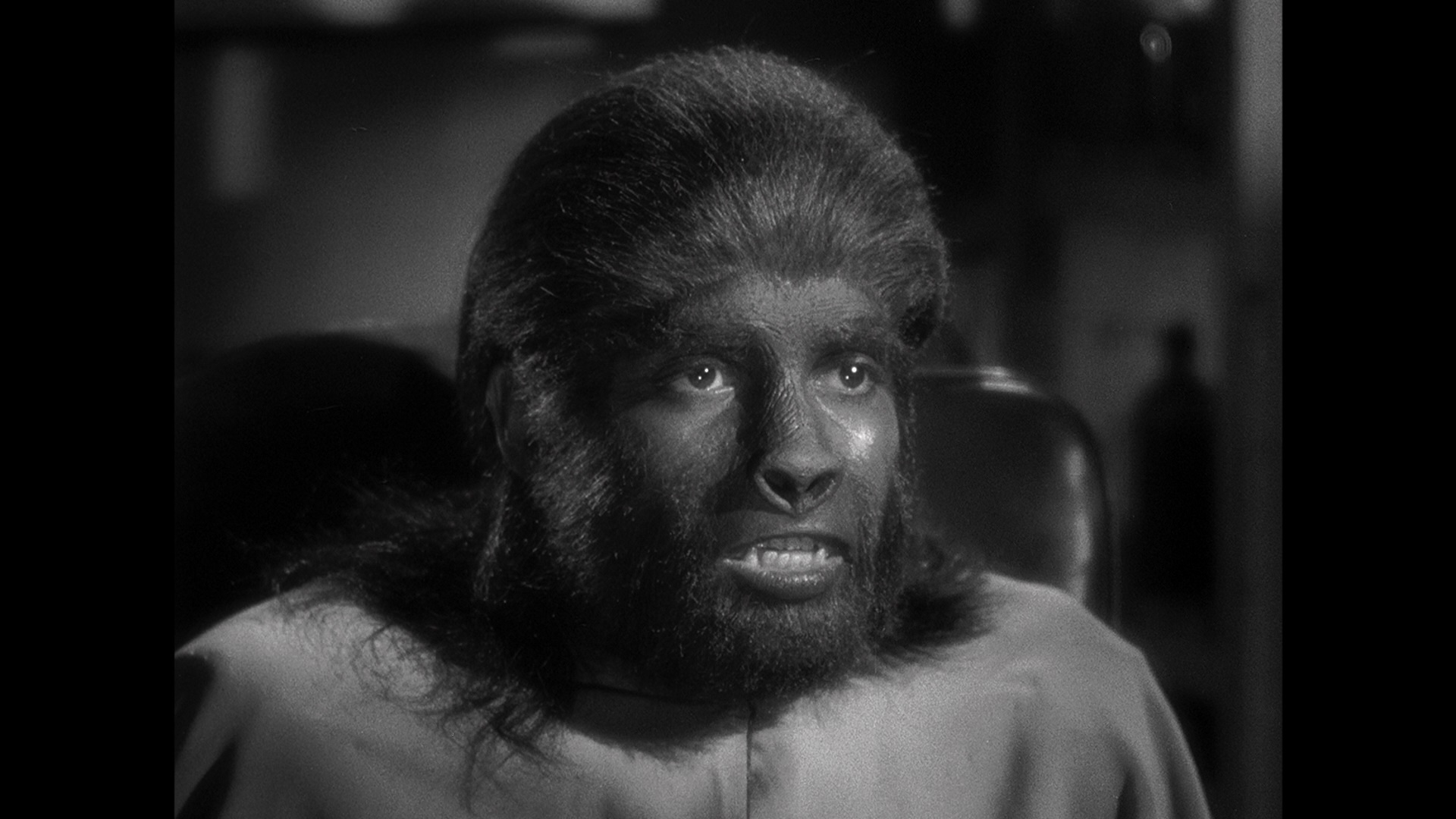 interesting presence, not exactly delivering a "performance" but commanding the screen all the same. As you'd expect from the title, she's painted here as a subhuman "other" mixed with the usual exotic fetishizing of the era, which obviously ties in to the time capsule nature of the production and marks it as a product of the era. Today the most fascinating aspect of this film is the fact that it was an early effort by none other than Edward Dmytryk, who had just helmed the fun Boris Karloff vehicle The Devil Commands and would become a big Hollywood name (as well as a controversial figure during the McCarthy Red Scare era) with films like The Carpetbaggers, Raintree County, and Walk on the Wild Side. He does an efficient job here, conjuring up some nice noir-worthy visuals at times even with an obviously strapped budget. The Scream Factory disc looks perfectly fine and makes for an upgrade over the 2009 DVD (which was packaged with its two semi-sequels), revealing the patchwork nature of the production with the preexisting animal training coverage obviously looking lower quality by its very nature. Here you get a new audio commentary by Weaver who provides thoughts on the use of footage from 1933's The Big Cage, the wild narrative consistencies caused in the later films, and the, um, vivid reason why Carradine couldn't wear white pants for very long. You also get some bonus integrated comments from zoo keeper
interesting presence, not exactly delivering a "performance" but commanding the screen all the same. As you'd expect from the title, she's painted here as a subhuman "other" mixed with the usual exotic fetishizing of the era, which obviously ties in to the time capsule nature of the production and marks it as a product of the era. Today the most fascinating aspect of this film is the fact that it was an early effort by none other than Edward Dmytryk, who had just helmed the fun Boris Karloff vehicle The Devil Commands and would become a big Hollywood name (as well as a controversial figure during the McCarthy Red Scare era) with films like The Carpetbaggers, Raintree County, and Walk on the Wild Side. He does an efficient job here, conjuring up some nice noir-worthy visuals at times even with an obviously strapped budget. The Scream Factory disc looks perfectly fine and makes for an upgrade over the 2009 DVD (which was packaged with its two semi-sequels), revealing the patchwork nature of the production with the preexisting animal training coverage obviously looking lower quality by its very nature. Here you get a new audio commentary by Weaver who provides thoughts on the use of footage from 1933's The Big Cage, the wild narrative consistencies caused in the later films, and the, um, vivid reason why Carradine couldn't wear white pants for very long. You also get some bonus integrated comments from zoo keeper 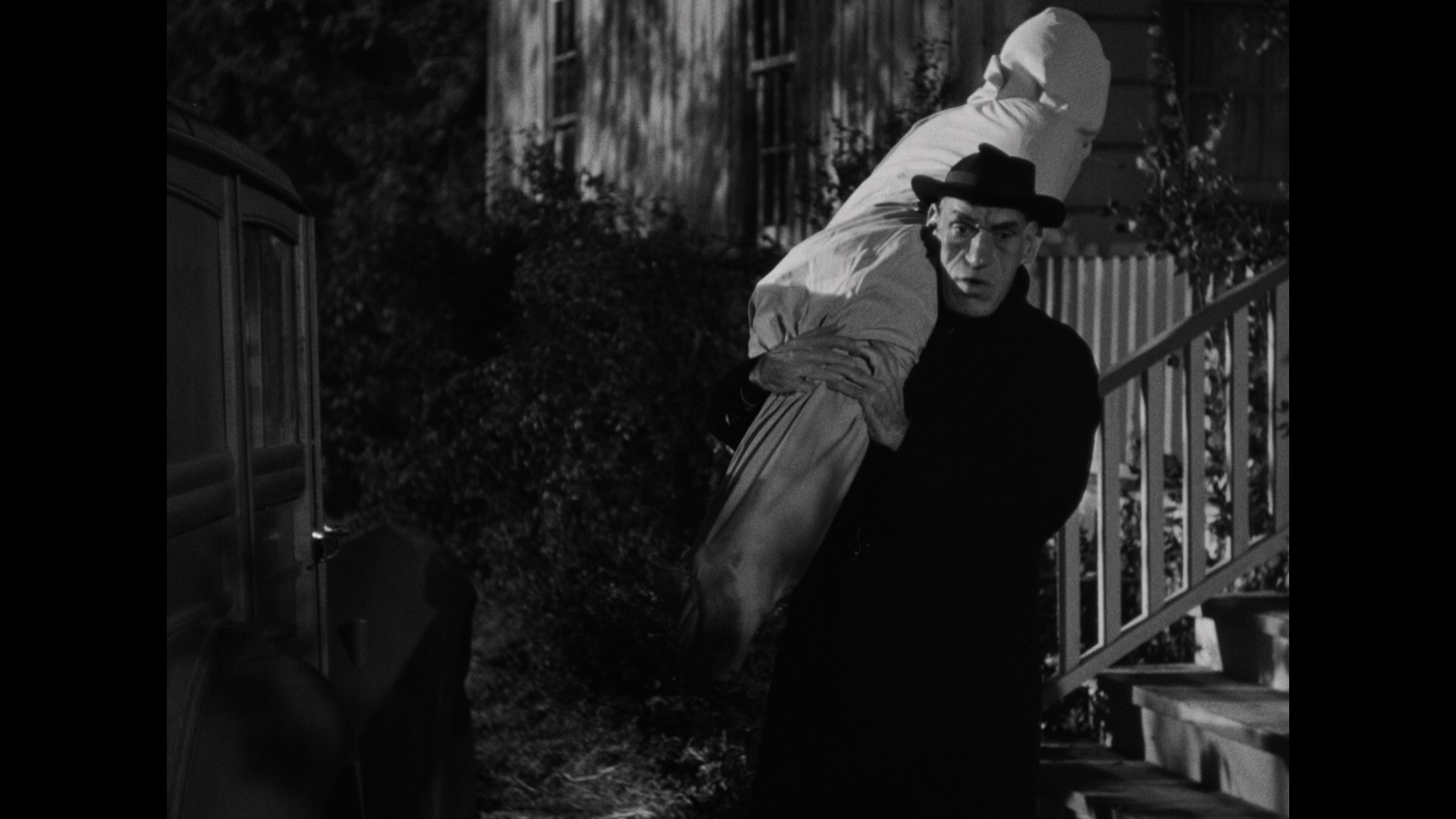 Dave
Dave  Hodge and a recreation of an Acquanetta interview about her Native American background as well as her life in Arizona at the time (and her vaguely defined ability to see the future!). A theatrical trailer and a still gallery (1m56s) are also included.
Hodge and a recreation of an Acquanetta interview about her Native American background as well as her life in Arizona at the time (and her vaguely defined ability to see the future!). A theatrical trailer and a still gallery (1m56s) are also included.  Joan (Collier). Prone to turn ape any time her passions get aroused, Paula is soon connected to some
Joan (Collier). Prone to turn ape any time her passions get aroused, Paula is soon connected to some 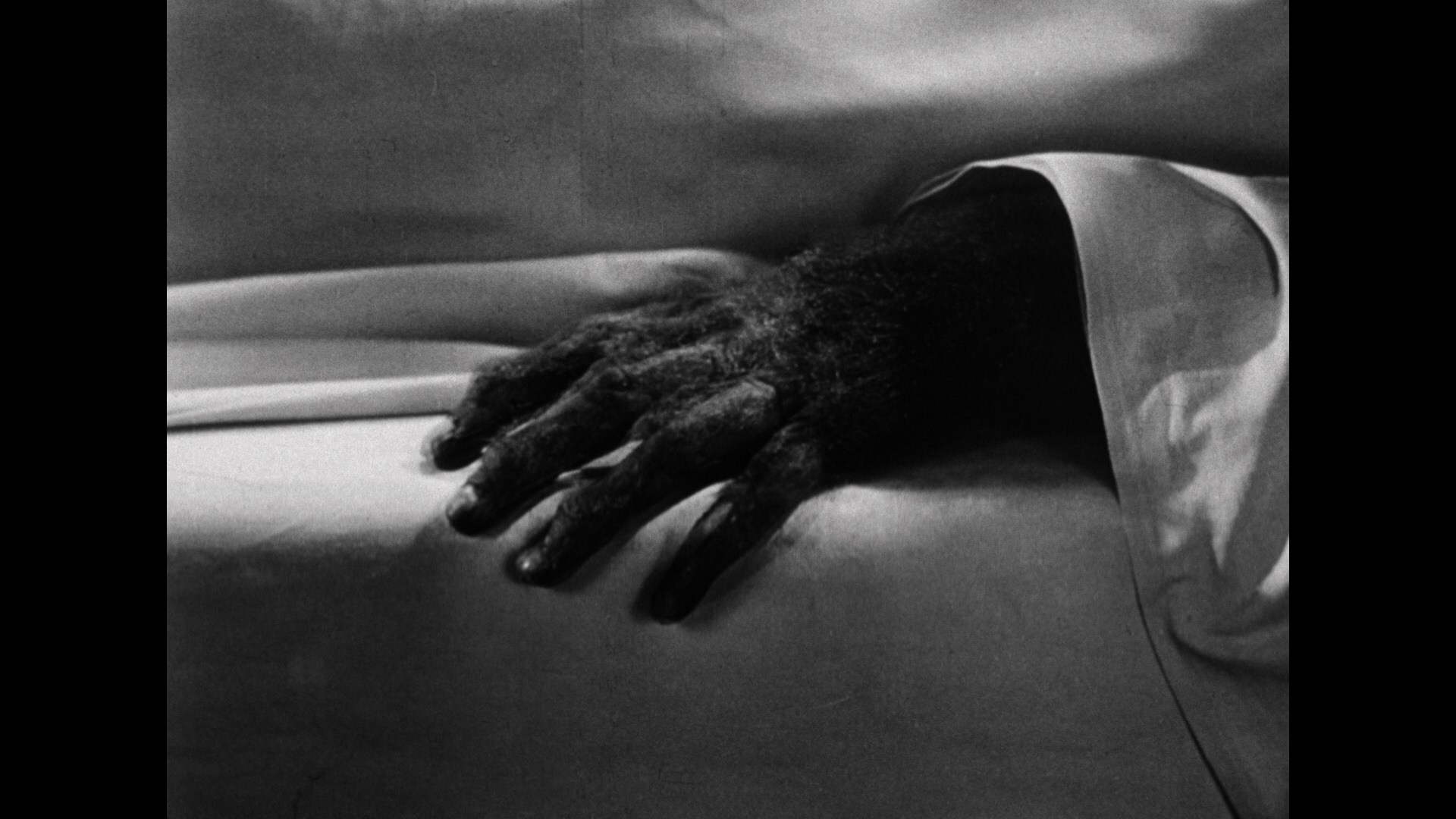 mysterious animal and human deaths in the vicinity.
mysterious animal and human deaths in the vicinity.  objection to the bestiality implications of the script, the postwar plastic surgery that saved one actor's face, the Lewton-esque
objection to the bestiality implications of the script, the postwar plastic surgery that saved one actor's face, the Lewton-esque  tactics that don't quite come off, and the conflicting information about the star's biography and temperament.
tactics that don't quite come off, and the conflicting information about the star's biography and temperament. 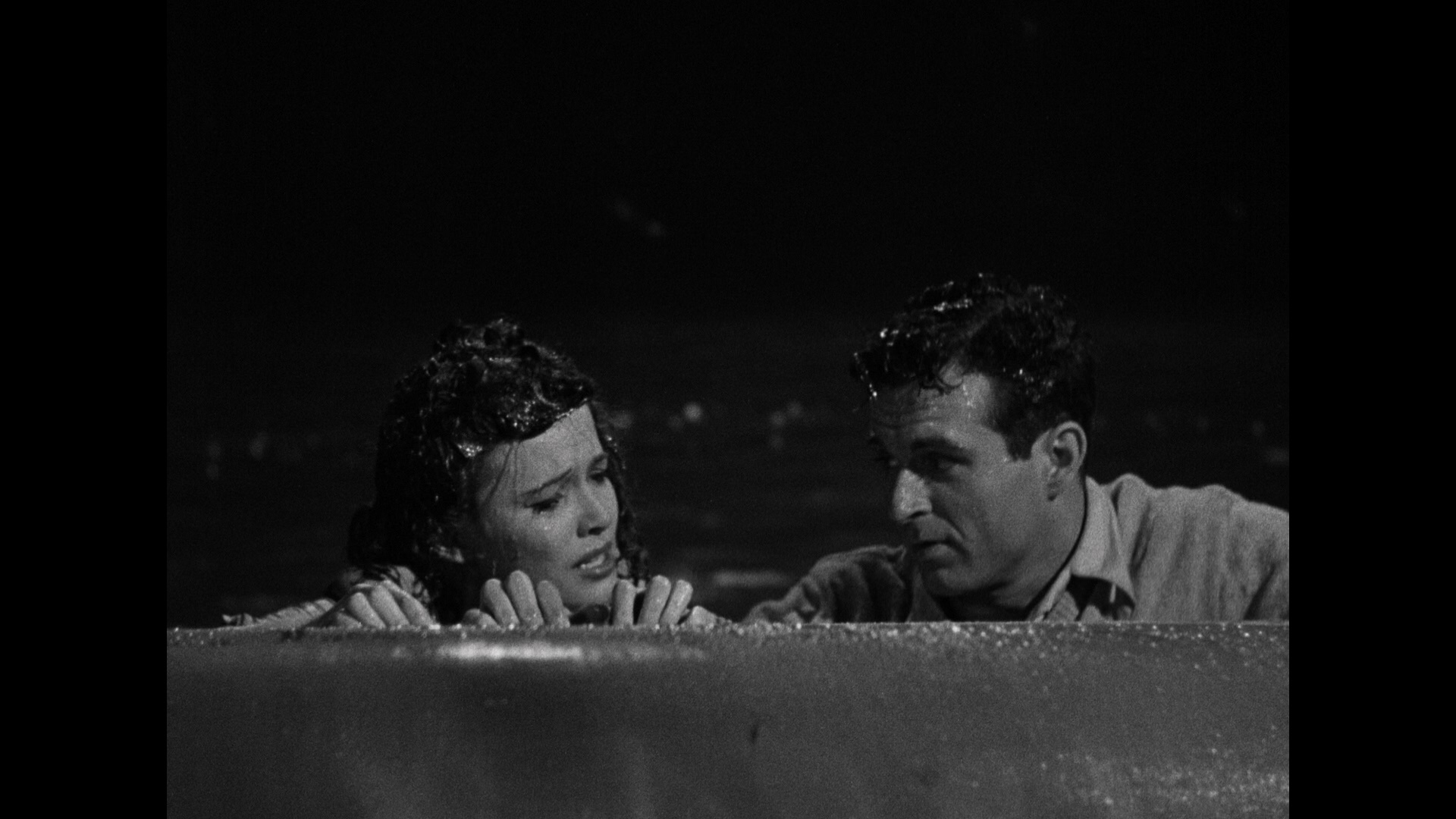 display a bit more depth and
display a bit more depth and 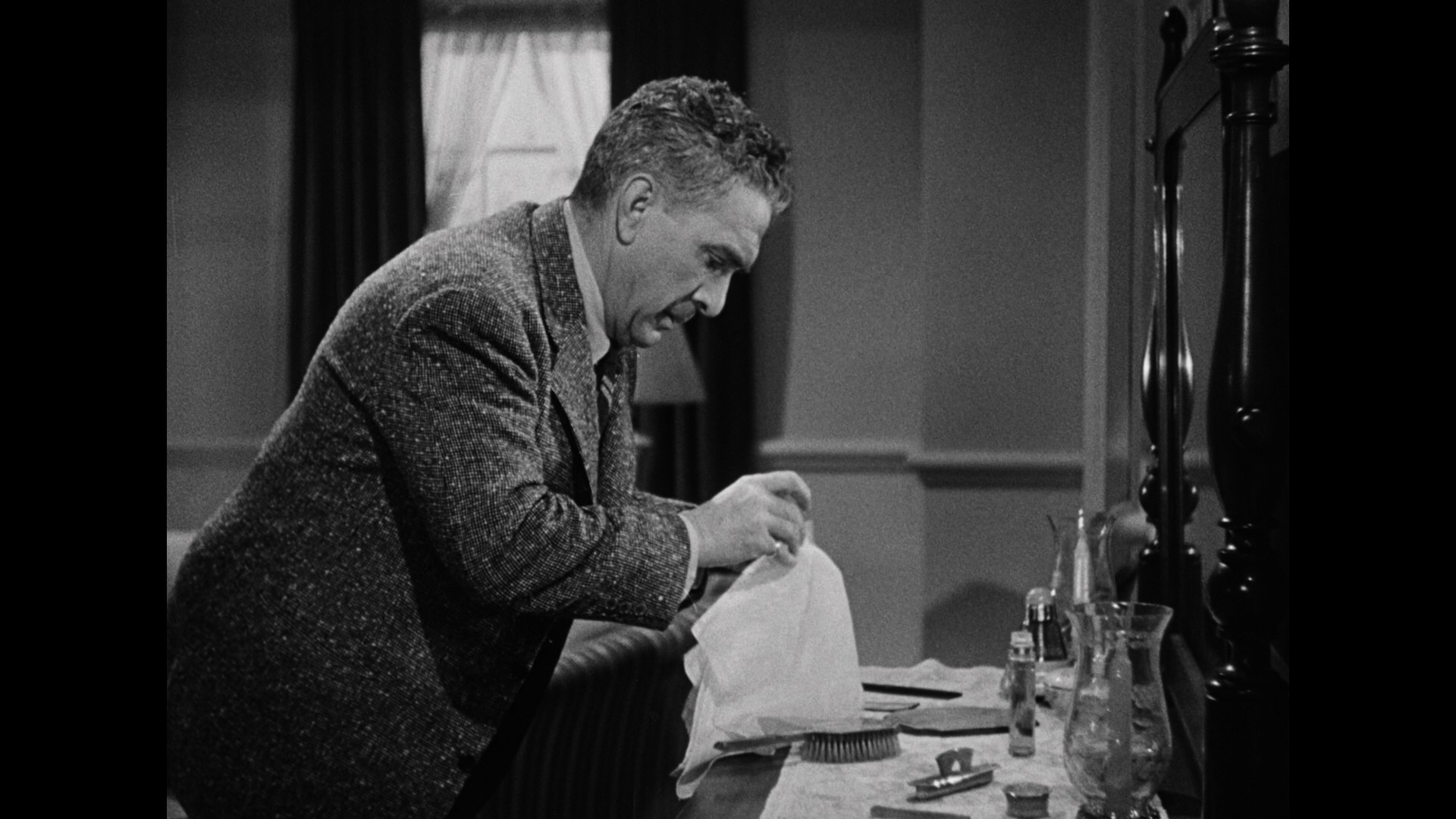 layering than you might expect), this entry shifts the most fearsome activity right onto the shoulders of Kruger who proves up to the task. As usual it's still ridiculous cinematic junk food, of course, but the cast manages to pull it off and the absence of all that preexisting footage that bogged down the prior film is much appreciated here. Lane may not cut as vivid a figure as her predecessor, but she's still game and puts up with all that heavy makeup like a pro. Like the others, this one clocks in just over an hour and doesn't wear out its welcome; basically you could knock out all of these films in an evening without too much fuss. Here you also get a new 2K scan resulting in a pleasing presentation with nice textures, convincing film grain, and rich, deep blacks. The main titles are in less than great shape, but the rest of the film looks quite nice with only some very minimal flaws on display. A trailer is included (and it's worth noting the trailers in this set are in better shape than usual for Universal titles), the disc features a new audio commentary by film historian Scott Gallinghouse who has plenty to say about Hatton, the approach of this entry compared to the other titles, and particularly Lane, with quite a bit about her privileged background and the domineering marriage at the time that may have had an adverse effect on her professional career.
layering than you might expect), this entry shifts the most fearsome activity right onto the shoulders of Kruger who proves up to the task. As usual it's still ridiculous cinematic junk food, of course, but the cast manages to pull it off and the absence of all that preexisting footage that bogged down the prior film is much appreciated here. Lane may not cut as vivid a figure as her predecessor, but she's still game and puts up with all that heavy makeup like a pro. Like the others, this one clocks in just over an hour and doesn't wear out its welcome; basically you could knock out all of these films in an evening without too much fuss. Here you also get a new 2K scan resulting in a pleasing presentation with nice textures, convincing film grain, and rich, deep blacks. The main titles are in less than great shape, but the rest of the film looks quite nice with only some very minimal flaws on display. A trailer is included (and it's worth noting the trailers in this set are in better shape than usual for Universal titles), the disc features a new audio commentary by film historian Scott Gallinghouse who has plenty to say about Hatton, the approach of this entry compared to the other titles, and particularly Lane, with quite a bit about her privileged background and the domineering marriage at the time that may have had an adverse effect on her professional career.